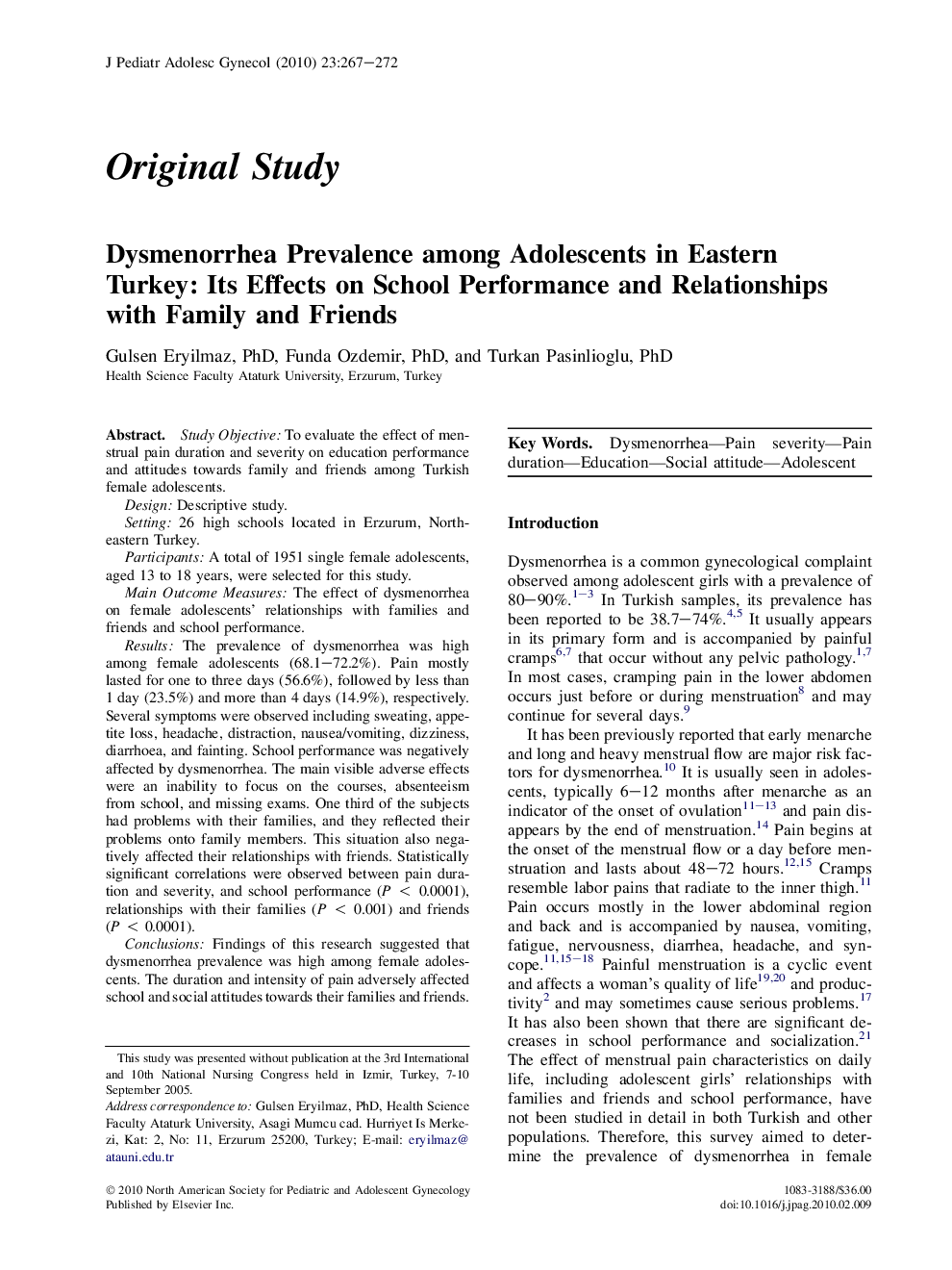| Article ID | Journal | Published Year | Pages | File Type |
|---|---|---|---|---|
| 3963116 | Journal of Pediatric and Adolescent Gynecology | 2010 | 6 Pages |
Study ObjectiveTo evaluate the effect of menstrual pain duration and severity on education performance and attitudes towards family and friends among Turkish female adolescents.DesignDescriptive study.Setting26 high schools located in Erzurum, Northeastern Turkey.ParticipantsA total of 1951 single female adolescents, aged 13 to 18 years, were selected for this study.Main Outcome MeasuresThe effect of dysmenorrhea on female adolescents' relationships with families and friends and school performance.ResultsThe prevalence of dysmenorrhea was high among female adolescents (68.1–72.2%). Pain mostly lasted for one to three days (56.6%), followed by less than 1 day (23.5%) and more than 4 days (14.9%), respectively. Several symptoms were observed including sweating, appetite loss, headache, distraction, nausea/vomiting, dizziness, diarrhoea, and fainting. School performance was negatively affected by dysmenorrhea. The main visible adverse effects were an inability to focus on the courses, absenteeism from school, and missing exams. One third of the subjects had problems with their families, and they reflected their problems onto family members. This situation also negatively affected their relationships with friends. Statistically significant correlations were observed between pain duration and severity, and school performance (P < 0.0001), relationships with their families (P < 0.001) and friends (P < 0.0001).ConclusionsFindings of this research suggested that dysmenorrhea prevalence was high among female adolescents. The duration and intensity of pain adversely affected school and social attitudes towards their families and friends.
